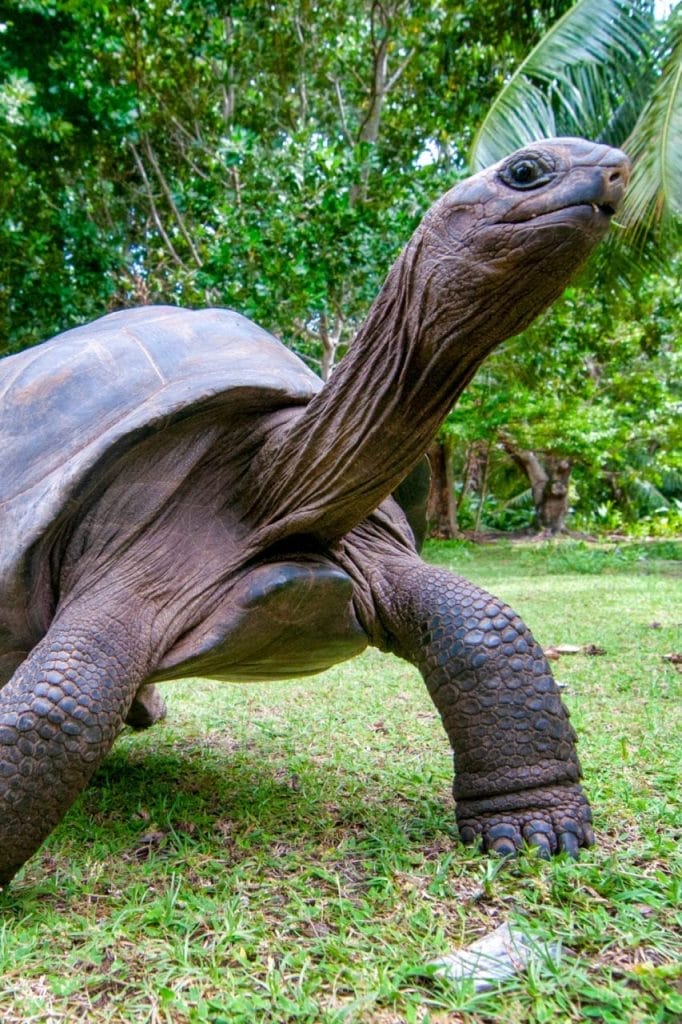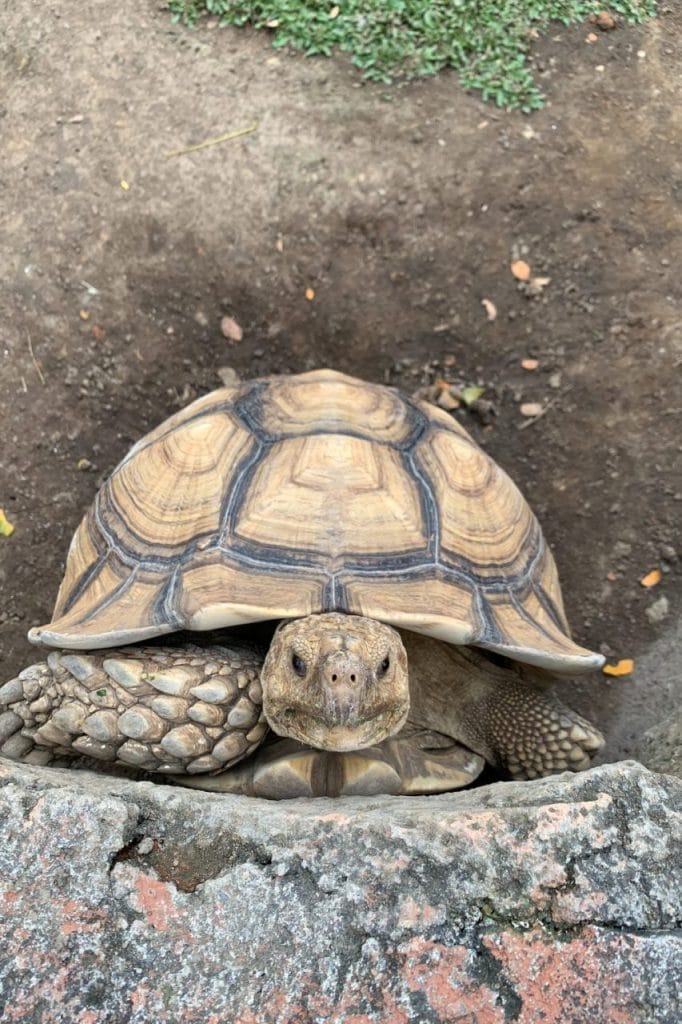The 5 Longest-Living Tortoise Species and How They Age Gracefully

This post was created with help from AI tools and carefully reviewed by a human (Muntaseer Rahman). For more on how we use AI on this site, check out our Editorial Policy.
Tortoises aren’t just old—they’re ancient.
Some of them live longer than family trees. Others just look like they’ve seen dinosaurs.
But how do they actually manage to outlive wars, fads, and most of us?
Let’s walk through five tortoise species that have mastered the slow game—and the secrets behind their ridiculously long lives.
5 Longest-Living Tortoise Species

1. Aldabra Giant Tortoise
These guys are basically walking boulders with chill personalities. Native to the Aldabra Atoll in the Indian Ocean, they’re massive, calm, and really, really patient.
Lifespan:
150+ years. Some even hit 180 with zero drama.
Aging Secrets:
- Low metabolism: They burn energy slower than a lazy Sunday.
- Herbivorous diet: Grasses, leaves, and fruits. No junk. No sugar highs.
- Zero urgency: Their main enemy is boredom, not predators.
You don’t “raise” an Aldabra. You inherit one.
If you’re getting one as a pet, think of it like getting a family heirloom that eats lettuce.

2. Galápagos Tortoise
The poster child of old age. They live on the Galápagos Islands and carry more wisdom than your whole extended family combined.
Lifespan:
Up to 175 years. But one of the oldest tortoises on record—Harriet—lived to 176.
(Side note: Harriet met Charles Darwin. You can’t make this stuff up.)
Why They Last:
- Chill lifestyle: They nap like it’s a career.
- No predators: Isolation helps.
- Water-storing tanks: They can go days without drinking. Try that on your next hike.
Owning one? Great. Now explain it to your great-grandkids when they inherit it in your will.

3. Radiated Tortoise
This one doesn’t just live long—it does it with flair. The star-patterned shell is practically artwork.
Lifespan:
100–150 years. Stylish and stubbornly long-lived.
What Keeps Them Kicking:
- Calcium-rich plants: Keeps the shell in model shape.
- Low movement: They’re not chasing dreams—they’re chilling in the shade.
- Madagascar native: But critically endangered. Thanks, illegal pet trade.
Every time you see one, remember: it’s rare, fragile, and somehow still judging you.

4. Leopard Tortoise
Spots like a leopard, but zero speed. Found across sub-Saharan Africa, they’re surprisingly tough for something that moves like it’s always thinking about turning around.
Lifespan:
Typically 50–75 years in the wild. Up to 100 in ideal care, if you don’t mess it up.
Why They Last:
- No burrowing: They don’t dig. They wander.
- Adaptable: Dry heat, wild grasses, no problem.
- Heavyweight: For their size, they’re tanks. Good luck lifting one.
They’re not flashy. They’re not dramatic. They just show up, eat your weeds, and live longer than your pets.

5. Sulcata Tortoise
Also known as the African Spurred Tortoise. Or, if you’ve ever met one: the tank that lives in your yard.
Lifespan:
70–100 years, unless you raise it wrong. Which, let’s be honest, many people do.
Built to Last Because:
- Burrowers: Digging deep keeps them cool in brutal heat.
- Fiber diet: They love weeds, grasses, and whatever’s in your garden.
- Desert survival skills: They know how to stretch a drop of water.
Warning: If you give them fruit, you’re not helping. You’re hurting. This is a tortoise, not a toddler.
Warning: You Might Spend Hours Here
I’ve built the ultimate turtle and tortoise species database. This isn’t your average turtle list. Filter by genus, conservation status, and more. How many species? Which are endangered? What’s the tiniest one? It’s all there.
What’s Their Real Secret?
It’s not magic. It’s boring biology. But it works.
Here’s the breakdown:
1. Slow Metabolism = Less Wear and Tear
They don’t rush, so their cells don’t either. They’re basically running life on power-saving mode.
2. Plant-Based Diet
More fiber, less nonsense. Greens fuel slow but steady growth. No inflammation, no sugar crashes, no processed junk.
3. Calm Environment
Tortoises don’t have office stress, social media, or existential crises. They bask. They graze. That’s it.
4. Built-in Armor
Their shells are not just for show. It’s like living inside a mobile bunker.
This Hilarious Turtle Book Might Know Your Pet Better Than You Do
Let’s be real—most turtle care guides feel like reading a textbook written by a sleep-deprived zookeeper.
This one’s not that.
Told from the snarky point of view of a grumpy, judgmental turtle, 21 Turtle Truths You’ll Never Read in a Care Guide is packed with sarcasm, sass, and surprisingly useful insights.
And hey—you don’t have to commit to the whole thing just yet.
Grab 2 free truths from the ebook and get a taste of what your turtle really thinks about your setup, your food choices, and that weird plastic palm tree.
It’s funny, it’s honest, and if you’ve ever owned a turtle who glares at you like you’re the problem—you’ll feel seen.
Before You Get One…
Remember: this is not a hobby pet.
You’re not buying a tortoise. You’re starting a 100-year commitment.
If you’re not ready to leave it in your will, you’re not ready to own it.

About Author
Muntaseer Rahman started keeping pet turtles back in 2013. He also owns the largest Turtle & Tortoise Facebook community in Bangladesh. These days he is mostly active on Facebook.











